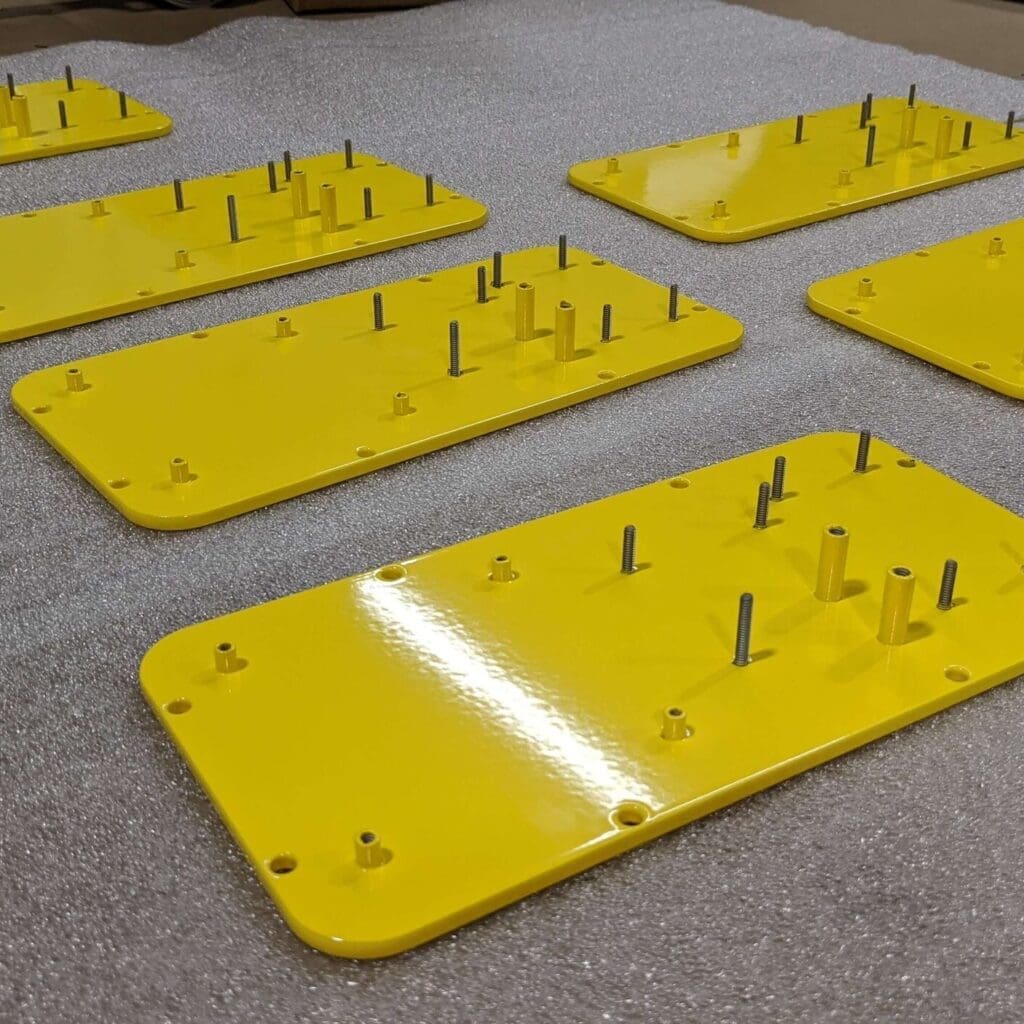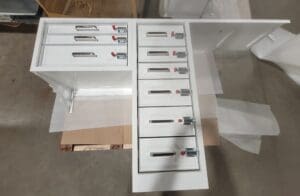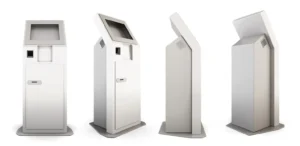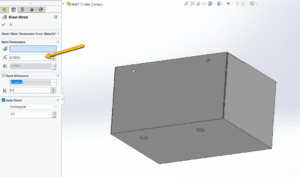Last updated on June 25th, 2024 at 09:14 am
Some of the most common issues we’ve encountered during our 15+ years of experience assembling sheet metal parts occur during hardware insertion.
occur during hardware insertion.
If we’re getting ready to assemble your custom sheet metal parts and suddenly find that the hardware doesn’t fit properly due to discrepancies in hole size or material thickness, it can slow the whole process way down. We have a rigorous quality inspection in place to catch these issues, but having to backtrack at any point during the assembly process can really affect lead times.
The best way to avoid bottlenecks during hardware insertion is to include accurate hardware hole sizes and compatible material thicknesses in your initial custom metal fabrication drawings.
Table of Contents
- 1 Hardware Hole Size
- 2 Sheet Metal Hardware Hole Sizes Chart
- 3 Material Thickness
- 4 Sheet Metal Hardware Hole Size FAQ
- 4.0.1 Why is hardware hole size crucial in sheet metal fabrication?
- 4.0.2 What happens if the hardware hole size in my drawings is incorrect?
- 4.0.3 How can I ensure smooth hardware insertion in my custom sheet metal parts?
- 4.0.4 Why is material thickness important in hardware insertion?
- 4.0.5 What recommendations do you have for hole sizes in thin and thick sheet metal?
Hardware Hole Size
Did you know that hardware hole sizes are the number one thing sheet metal fabricators have to fix before sending a part to the floor?
When we receive drawings with incorrect hardware hole sizes, one of two problems typically occurs—and each one can drastically slow down lead times:
The hole is too small. If the hardware hole size indicated is smaller than the hardware you’re working with, we can, and will, fix this problem for you. The solve is fairly simple: we take the time to manually drill the hole a bit bigger to accommodate your hardware. But adding in an unexpected manual operation does take more time.
The hole is too big. If the hardware hole size indicated is bigger than the hardware you’re working with, we can’t add material to the hole once it’s been cut. Unfortunately, in this case we have no choice but to scrap the part entirely and start over. Scrapping the part can cause delays in lead time, potentially increase costs, and isn’t great for the environment.
Our preference is to make sure we have the right information in place to make your part correctly the very first time! That way we can get your parts back to you as quickly as possible.
Approved Sheet Metal is always looking for ways to improve the customer experience, so we created a handy hardware hole sizes chart for product developers to reference when designing custom sheet metal parts. We recommend using this chart for your drawings so that we can get your hardware inserted correctly the first time.
Material Thickness
It’s also important to make sure that your material thickness is compatible with the hardware you’re inserting.
Typically if you have a piece of thin sheet metal, the length of the nub at the end of the hardware should be minimal. If too much of the nub is exposed, the pneumatic press we use to join the materials together may squish the hardware itself, preventing it from seating correctly. The result is a piece of hardware that either falls out or doesn’t fit properly with the rest of the components during assembly.
Thick sheet metal, on the other hand, benefits from having a longer nub at the end of the hardware. Thicker parts usually require a significant amount of strength to support more mass and having a longer nub can supply necessary reinforcement.
We recommend a hole size of -0” for thin parts and a hole size of -3” for really thick parts. You can refer to our hardware hole sizes chart for additional guidance.
When you’re in need of custom sheet metal assembly services, Approved Sheet Metal is here to get your parts to you fast. From enclosures and brackets to large cabinets with multi-process manufacturing, we can do it all! Give us a shot on your next project.
Sheet Metal Hardware Hole Size FAQ
The hardware hole size is critical because discrepancies can lead to significant issues during assembly. If the hole is too small, we manually drill it larger, causing potential delays. If it's too big, the part may need to be scrapped, leading to increased costs and environmental impact.
If the hole is too small, we can manually adjust it, but this adds extra time to the process. If it's too big, the part may need to be scrapped, causing delays and potential cost increases. It's crucial to provide accurate hole sizes to avoid these setbacks.
To ensure efficient hardware insertion, include accurate hardware hole sizes and compatible material thicknesses in your initial custom metal fabrication drawings. Our hardware hole sizes chart is a valuable resource for product developers to reference during the design phase.
Material thickness is vital in hardware insertion as it affects the length of the hardware's nub. Thin sheet metal requires a minimal nub length to prevent squishing during assembly. Thick sheet metal benefits from a longer nub for added strength. Following recommended hole sizes, especially in our hardware hole sizes chart, ensures a proper fit during assembly.
For thin parts, a hole size of -0” is recommended, while thick parts benefit from a hole size of -3”. These recommendations, along with guidance from our hardware hole sizes chart, help achieve optimal hardware insertion, preventing issues during the assembly process.





